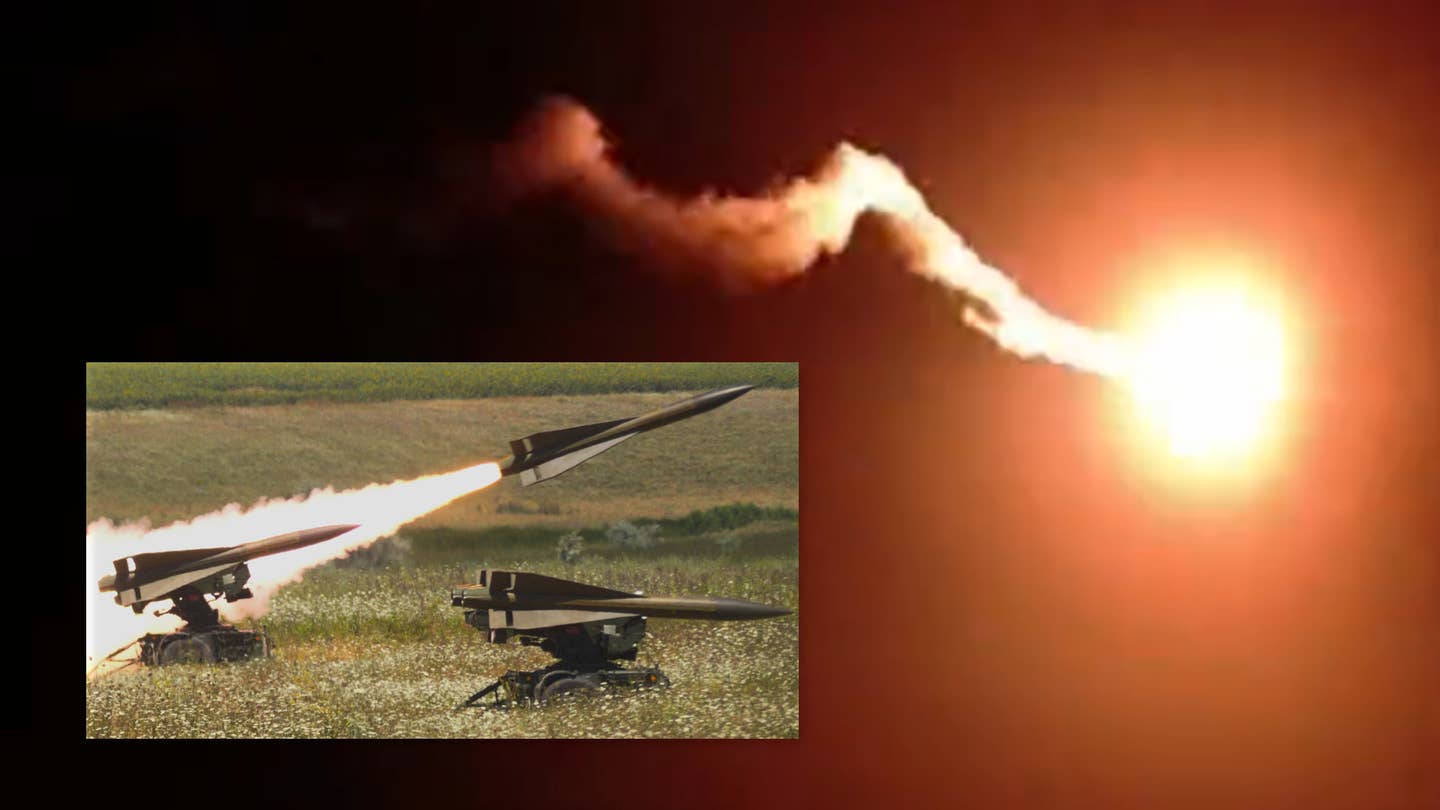First Look At Hawk SAMs Now In Action In Ukraine
U.S.-made Hawk systems give the Ukrainian military added medium-range air and missile defense coverage it sorely needs.
- Mykola Oleshchuk, commander of Ukraine's Air Force, first shared the clip of a Hawk system in action, also seen in the social media post below, on his Telegram channel earlier today. In the Ukrainian military, control of the vast majority of air and missile defense systems falls under the purview of the Air Force.
"The video shows the combat work of the American HAWK air defense system this night, which, along with the more modern anti-aircraft missile systems of the allies, defends the Ukrainian sky!" Oleshchuk wrote on Telegram.
The clip, shot at night, shows two Hawk missiles being launched. They are both seen detonating at what look to be relatively low altitudes, but it is unclear if they successfully neutralized their intended targets. The second missile explodes much closer to the camera than the first and a significant cloud of shrapnel and/or debris is visible.
"The 100-percent result is not easy, but we will get closer to it every day, strengthening our air defense!" Oleshchuk added in his Telegram post. "Western weapons have proven and continue to prove their effectiveness on the battlefield!"
The Improved Hawk (I-Hawk) Phase III version notably introduced the Low-Altitude Simultaneous Hawk Engagement (LASHE), giving it the ability to target multiple low-altitude threats at once. This was the last version of the system in U.S. military service, with the U.S. Marines retiring the last of their examples in the 1990s. A further advanced version, called Hawk XXI or Hawk 21, with upgraded radars and other systems, was subsequently developed and remains in service in a number of countries.
Multiple MIM-23 interceptors have also been developed for the Hawk system over the years. These have featured steadily improving engagement capabilities, especially against lower-flying targets, including cruise missiles, and resistance to hostile electronic warfare jamming. Certain later variants were even designed to provide a lower-end anti-ballistic missile capability.
You can read more about the Hawk system and its interceptors in this past War Zone piece.
It is not clear what versions of Hawk have been sent to Ukraine so far. Last year, Spain announced it would be transferring some of its inventory, which includes I-Hawk Phase I and III systems, as well as some number of Hawk XXI/Hawk 21s.
In February of this year, Sweden also announced plans to give some components of its I-Hawk systems, also known in that country as RBS 97s, to Ukraine. At least a portion of Sweden's RBS 97s have been in the process of being modernized since 2015.
The United States has also pledged to send Hawk systems to Ukraine. These will reportedly be modernized first in some way as part of a crash U.S. air defense program for Ukraine called FrankenSAM. The exact source of these systems is unknown, but may include some of Taiwan's recently retired Hawks, or components thereof, as well as ones still in storage in the United States.
The video below includes clips from Taiwan's Hawk retirement ceremony in June 2023 and of these systems being fired during training in the past.
FrankenSAM also includes a still mysterious "new" air defense system that uses the AIM-9M Sidewinder missile as its effector and a project to integrate AIM-7 Sparrow/RIM-7 Sea Sparrow missiles onto Ukraine's existing Soviet-era Buk launchers.
What is clear is that some mixture of Hawk systems are now in service in Ukraine, offering an important additional medium-range surface-to-air missile capability. At the outset of the current conflict, Ukraine's primary surface-to-air missile system in this tier was the venerable Buk, but the country has limited options for sourcing more interceptors for these systems. This is a key driver behind the plan to integrate AIM-7/RIM-7 missiles onto Buk launchers.
At the same time, there are limited middle-tier surface-to-air missile system options in the West that could be readily sent to Ukraine. The United States, the Ukrainian military's biggest foreign benefactor, notably does not have any systems in this tier in widespread service itself. The U.S. military does have a limited number of National Advanced Surface-to-Air Missile Systems (NASAMS) deployed to protect the greater Washington, D.C. area, also known as the National Capital Region (NCR).
Hawk, though an older system overall, looks well suited to the kind of threat mix that Ukraine faces. Hawk versions with the multi-target LASHE capability, in particular, would offer valuable additional defensive capacity against large-volume Russian kamikaze drone and cruise missile strikes.
The various elements of the Hawk system are all typically truck or trailer-mounted, giving the system a certain degree of mobility that could also make it useful for supporting Ukraine's ongoing offensive operations in the eastern end of the country.
Lastly, it is worth noting that Hawk remains in service in a number of countries, including in Europe, and with nations that are already actively providing military aid to Ukraine. Hawk was also widely exported and many countries that have retired it, like the United States and Taiwan, likely have significant stockpiles of both system components and interceptors available for transfer.









No comments:
Post a Comment